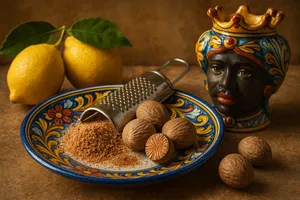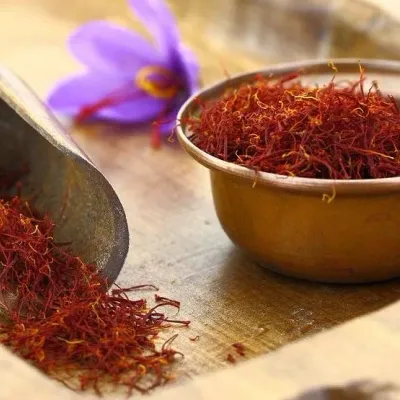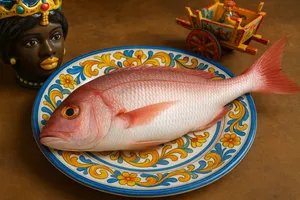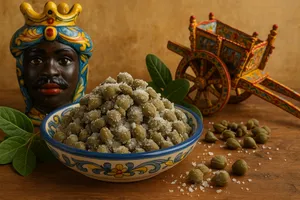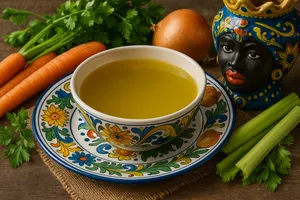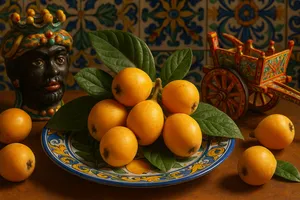Overview
Strawberries, known in Sicilian as “fràuli” or “fràvuli”, are the fruits of the plant Fragaria, grown in Sicily especially in coastal and hillside areas where the mild climate allows for early and extended production. These red fruits, with their unmistakable fragrance and sweet-tart flavour, represent one of the most beloved tastes of spring, eagerly awaited after the long winter months.
In Sicilian tradition, strawberries have always held a special place as a delicate, prized fruit, a symbol of spring and sweetness. Eaten fresh on their own or with sugar and lemon, used to decorate cassate and cakes, transformed into fragrant jams or turned into ice creams and granitas, strawberries are a versatile ingredient that has travelled from humble kitchens to refined patisserie while always retaining their irresistible charm.
Characteristics
Strawberries have a conical or heart-shaped form, varying in size from 2 to 5 centimetres depending on the variety. Their colour is a bright, vivid red when fully ripe, with small achenes (the so-called “seeds”) that appear yellow or whitish on the outer surface. The flesh is soft, juicy and fragrant.
The flavour is sweet with a pleasant tart note that varies with variety and ripeness. Their scent is intense, distinctive and unmistakable - sweet and penetrating. The texture ranges from firm and crisp in freshly picked fruit to softer in very ripe berries.
Quality strawberries have a uniform red colour right up to the calyx (white areas reaching too high indicate premature picking), an intense aroma, firm but not hard flesh, and absence of bruising or mould. The green calyx should be fresh and securely attached.
Varieties
Once-bearing strawberries
Varieties that produce only once a year, typically in spring. These are traditional strawberries, with abundant, concentrated production. In Sicily they ripen from March to May and generally have a more intense flavour.
Everbearing strawberries
Varieties that fruit several times during the season, from spring to autumn. They allow for fresh strawberries over a longer period. Production is less concentrated but more continuous.
Wild strawberries
Small wild or cultivated strawberries, tiny in size but extraordinarily intense in flavour and aroma. They are treated as a separate ingredient.
Modern commercial varieties
Large strawberries with uniform appearance and good keeping qualities, cultivated for the market. Some varieties have excellent flavour, while others prioritise appearance and transport resistance.
Seasonality
In Sicily, thanks to the mild climate, strawberries are available from February–March until May–June, with possible autumn production in everbearing varieties. The peak of production and quality is in April and May, when strawberries are at their sweetest and most aromatic.
Sicilian strawberries - especially those from the areas of Ribera, Sciacca and the southern coastal belt - are among the earliest to ripen in Italy, benefiting from warm, sunny weather. Spring strawberries generally have better flavour than autumn ones.
Culinary use
Strawberries have countless uses in Sicilian cuisine and patisserie.
Fresh consumption
The simplest and most appreciated way is to enjoy strawberries fresh, perhaps with a sprinkle of sugar and a few drops of lemon or orange. In Sicily they are traditionally served as a springtime dessert.
Strawberries with cream
A classic pairing in which fresh strawberries are served with sweetened whipped cream - a simple yet refined dessert.
Strawberry fruit salad
Sliced strawberries are macerated with sugar and lemon or orange juice, creating a fresh and fragrant dessert. Other seasonal fruits may be added.
Strawberry jam
Strawberries are cooked with sugar and lemon to produce a bright red, intensely aromatic jam, perfect for filling tarts, biscuits or for spreading on bread.
Cakes and tarts
Fresh strawberries decorate cakes, cassate and tarts. A strawberry tart on pastry cream is a classic of spring patisserie.
Ice cream and sorbet
Strawberry pulp is used to make creamy ice creams and refreshing sorbets, much loved in Sicily.
Strawberry granita
A typically Sicilian preparation where strawberries are transformed into a vivid red granita with intense flavour, served with warm brioche.
Syrup and liqueur
Strawberry juice is used to prepare syrups for drinks and aromatic liqueurs. Strawberry syrup is used in granitas and cocktails.
Preparation
Strawberries should be washed gently shortly before consumption, never too far in advance. They are washed whole, without removing the calyx, under cold running water or by briefly immersing them. After washing, dry them carefully by dabbing.
The green calyx is removed after washing, by gently pulling it off or cutting it with a small knife. Strawberries can be used whole, halved, quartered or sliced depending on the preparation.
For jams and cooked preparations, strawberries should be washed, trimmed and cut. For fresh consumption, it is best to leave them whole or cut them only at the last moment to avoid loss of juice.
Storage
Strawberries are very delicate and highly perishable. They keep in the refrigerator for at most 2–3 days, arranged in a single layer on a plate or in a perforated container, lightly covered. They should never be washed before storage, only before eating.
They must not be piled up, as they bruise and mould easily. Store them away from strong-smelling foods as they absorb odours. They are best eaten at room temperature, taking them out of the fridge 30 minutes beforehand.
Strawberries freeze well: wash, dry, remove the calyx and freeze them whole on trays, then transfer to bags. They keep for 8–10 months and are excellent for desserts, ice creams and smoothies. They may also be frozen with sugar or as a purée.
Buying tips
When buying fresh strawberries, choose fruits that are uniformly bright red, with no pale or green areas that indicate underripeness. Their aroma should be intense and sweet. Strawberries must be firm but not hard, free from bruises, mould or soft spots.
The calyx should be green, fresh and securely attached. Check the bottom of the container: if it is damp or stained, there may be crushed or overripe berries. Avoid strawberries that are overly shiny, which may indicate treatment.
Prefer local, seasonal strawberries, ideally bought directly from growers or at markets. Sicilian spring strawberries have exceptional flavour. Strawberries do not ripen after picking, so they must be harvested ripe.
Nutritional properties
Strawberries are light: 100 grams provide about 30–35 calories. They are around 90% water and contain about 7–8 grams of carbohydrates per 100 grams, mainly simple sugars (fructose and glucose). Protein and fat content is very low.
They are extremely rich in vitamin C (even more than citrus fruits): 100 grams may provide up to 60 mg of vitamin C, covering the daily requirement. They also contain vitamin K, folic acid and B vitamins. They are a good source of potassium, magnesium and phosphorus.
Strawberries are rich in antioxidants, particularly anthocyanins (responsible for the red colour) and ellagic acid, with anti-inflammatory and protective properties. They contain fibre that supports intestinal regularity. They have diuretic and cleansing properties.
In Sicilian folk medicine, strawberries were considered cleansing, refreshing and beneficial for the skin. They should be eaten in moderation by those prone to allergies, as they may cause reactions in sensitive individuals.
Curiosities
Strawberries are not botanically true fruits: the real fruits are the small yellow achenes (“seeds”) on the surface, while the red fleshy part we eat is actually an enlarged receptacle.
In Sicilian tradition, the first strawberries of spring were considered a special event. Farming families who grew strawberries would offer the first harvest to neighbours and friends as a gesture of courtesy and shared springtime joy.
An old Sicilian saying goes: “Quannu veni la staggiuni di fràuli, ogni cori si fa chiù duci” (When strawberry season arrives, every heart becomes sweeter), linking the sweetness of strawberries to the gentle sentiments of spring.
In some rural areas of Sicily, wild strawberries growing naturally at the edge of woods were gathered by children as a delicious snack during walks. This tradition, now rare, still lives in the memories of older generations.
During springtime patronal festivals in some Sicilian villages, strawberry granitas and sorbets were prepared and offered to the faithful and visitors, celebrating nature’s abundance in spring.
Strawberries have also been used in traditional Sicilian cosmetics: women prepared beauty masks by crushing ripe strawberries and applying them to the face to lighten the skin and reduce freckles - a practice passed down from grandmothers, supported by the gentle exfoliating effect of fruit acids.


